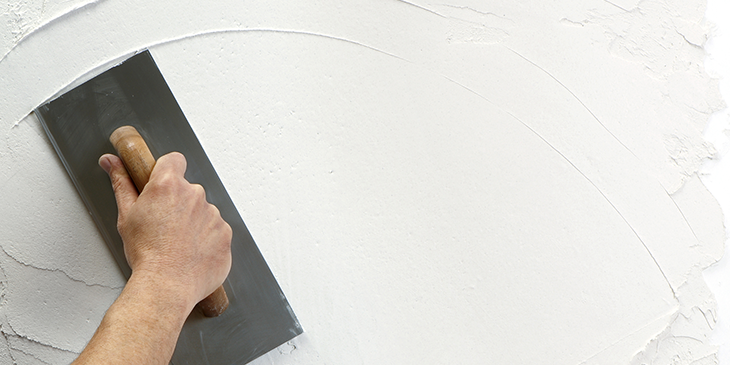Plastering Providers: Specialist Solutions for Smooth and Sturdy Wall Surfaces
Secret Tips and Devices for Successful Gluing in your house Renovation Undertakings
Attaining a perfect plaster surface in your home improvement projects calls for a mix of the right tools and tested methods. Understanding the subtleties of blending plaster and using it in thin layers can dramatically affect the final outcome.
Essential Smudging Tools
A plasterer's toolkit is fundamental to accomplishing a smooth and resilient coating on ceilings and wall surfaces. The necessary tools encompass a selection of executes developed to assist in the smudging procedure successfully and properly. Trick elements include a hawk, which is a flat, square device made use of to hold the plaster while applying it to surfaces. This device permits easy transportation and application of the material.

Furthermore, a blending pail is needed for preparing plaster, making certain the right consistency before application (Plastering). With each other, these essential plastering tools enable both experts and Do it yourself fanatics to attain high-grade results in their gluing tasks.
Surface Prep Work Techniques
Correctly preparing the surface prior to plastering is vital for making sure attachment and achieving a perfect coating. The very first step entails cleansing the surface area to get rid of any type of dirt, grease, or old paint that might prevent the plaster's ability to bond properly. A comprehensive wash with an appropriate cleansing remedy is advised, followed by enabling the surface area and washing to completely dry completely.
Next, evaluate the surface for any type of flaws or fractures. These need to be loaded with an ideal filler substance and permitted to cure according to the supplier's guidelines. For porous surfaces, using a primer is vital to improve and create an uniform appearance bond.
Furthermore, it is vital to guarantee that the surface area is steady and structurally noise. Any type of loose products, such as flaking paint or damaged drywall, should be fixed or gotten rid of. If working with masonry surface areas, take into consideration using a scrape layer to boost grasp.
Mixing Plaster Like a Pro

Using a tidy mixing container, pour the water first, then progressively include the plaster powder while mixing continually. This technique assists to stop clumping and guarantees an also circulation of materials.
As soon as combined, allow the plaster to relax for a few minutes to enable the gypsum crystals to hydrate totally. This pause improves workability and minimizes the threat of breaking during application. By complying with these actions, you can blend plaster like a pro, setting the structure for an effective smudging task in your house renovation undertakings.
Application Methods for Smooth Finishes
With the plaster mixture prepared to the excellent uniformity, the following step involves picking ideal application methods to attain a smooth finish. This tool permits for a fine, even circulation of plaster throughout the surface area while reducing trowel marks.
Begin by using a generous quantity of plaster to the surface area using the trowel, guaranteeing it sticks well. Utilize a methodical approach, functioning from the bottom upward. Once the preliminary coat is applied, make use of a sweeping motion to smooth the surface, applying even pressure. In areas that require even more navigate to this site thorough attention, take into consideration using a float, which can assist eliminate any kind of blemishes and produce a consistent texture.
For the last touches, a damp sponge can be utilized to improve the surface better. Lightly haze the plaster with water and carefully scrub the surface area to attain a refined impact. Constantly bear in mind to operate in small sections to preserve control over the application process, ensuring a smooth, specialist surface throughout your plastering job.
Typical Mistakes to Prevent
When embarking on a gluing project, preventing typical blunders is critical for attaining a flawless surface. One of one of the most prevalent errors is neglecting surface area preparation. Falling short to tidy and repair the substrate can lead to inadequate bond and irregular surfaces. Ensure that all dirt, grease, and loosened products are gotten rid of prior to applying plaster.
An additional common blunder is using plaster as well thickly. Thick layers can break as they dry out, compromising the honesty of the coating. Instead, opt for multiple Go Here thin layers, enabling each coat to dry entirely prior to applying the next.
In addition, inadequate blending strategies can result in irregular appearance and workability. Always comply with the manufacturer's guidelines for mixing ratios and extensively mix the plaster to accomplish an uniform consistency.

Timing also plays a critical function; plaster needs to be used while the substrate is moist to improve attachment. Finally, stay clear of making use of improper devices. Premium trowels and drifts can make a considerable difference in accomplishing a smooth coating. By staying away from these usual risks, you can improve the high quality and long life of your plastering work, leading to an extra specialist outcome in your home enhancement ventures.
Verdict
Effective plastering calls for an extensive understanding of essential devices and techniques. By making use of correct tools, guaranteeing meticulous surface area prep work, and sticking to recommended mixing proportions, optimal results can be achieved. Employing proper application methods further boosts the finish, while awareness of usual errors can protect against setbacks. Proficiency of these components not just contributes to the visual appeal of an area but additionally ensures sturdiness and durability in gluing projects, making them indispensable to effective home renovation undertakings.
A float is another critical device, which aids in leveling the plaster and achieving an uniform surface area.

By complying with these steps, you can mix plaster like a professional, establishing the foundation for an effective smudging job in your home improvement pop over here endeavors.
Lightly haze the plaster with water and gently scrub the surface area to accomplish a refined result.